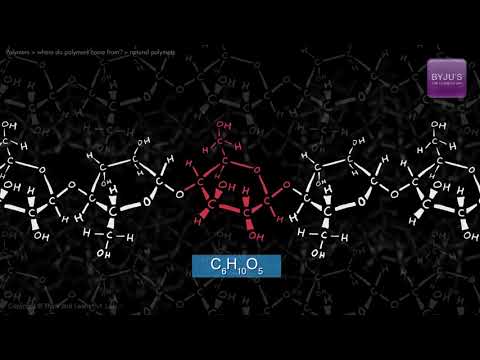What is Synthetic Rubber?
Any artificial elastomer is referred to as synthetic rubber.
Synthetic rubber is usually derived from additional polymers of polyene monomers and, unless the synthetic rubber is disclosed as a polysulfide rubber, laminates containing such a layer will be classified with additional polymers.
An elastomer is a material with the mechanical property that it can undergo much more elastic deformation under stress than most materials and still return to its previous size without permanent deformation. Synthetic rubber serves as a substitute for natural rubber in many cases, especially when improved material properties are required.
Recommended Video on Synthetic Rubber

Table of Contents
- History of Synthetic Rubber
- Synthetic Rubber vs Natural Rubber
- Uses of Synthetic Rubber
- Frequently Asked Questions on Synthetic Rubber
History of Synthetic Rubber
The expanded use of motor vehicles and particularly motor vehicle tires, starting in the 1890s created an increased demand for rubber. In 1909, a team headed by Fritz Hofmann working at the Bayer laboratory in Elberfeld, Germany succeeded in polymerisation Isoprene, the first synthetic rubber.
By 1940, the United States was stockpiling natural rubber, effectively doubling its normal imported amount of around a half million tons a year. In 1941, Japan occupied South East Asia cutting off supplies of natural rubber to the United States. In its first response to this supply crisis, the U.S government ordered the planting of tens of thousands of acres of guayule. This shrub which thrives in the western parts of the United States and in Mexico also contains rubber latex. It has the disadvantage of yielding the rubber only with difficulty; the plant must be ground up and extracted, thus requiring a constant supply of new plants.
By the end of the war, petroleum served as the base for synthetic rubber, as it would in the postwar years. The manufacturing process for using petroleum was more complex but on average petroleum was also cheaper. Progress was rapid. B.F.Goodrich has done early work in synthesis and became the largest producer of synthetic rubber during the war. US firms built fifty-one synthetic rubber factories between 1942 and 1945. During the same period, production climbed from 24,640 tons of synthetic rubber in 1942 to more than 784000 tons in 1945.
Synthetic Rubber vs Natural Rubber
| Natural Rubber | Synthetic Rubber |
| The rubber which is obtained from natural sources such as plants and animals is called natural rubber. | The rubber which is prepared artificially, which is man-made is termed synthetic rubber. Synthetic rubber holds a wide range of applications in daily life as well as in industries. |
| cis-1,4-polyisoprene | Neoprene, styrene-butadiene rubber etc. |
In November 1948, natural rubber became more freely available with a resulting lower price. It remains to be seen if synthetic rubber, on a quality and uniformity basis, will continue to be consumed voluntarily under the present price relationship of natural and synthetic rubber.
A considerable lag exists between the time of purchase and the time of consumption and prices may vary substantially in that period. The test will come when lower-priced natural rubber becomes more readily available and begins to enter into quantity consumption in manufacturing establishments.
Uses of Synthetic Rubber
- Synthetic rubber is preferred over natural rubber for some uses if the price difference is not too great.
- The transport industry is the largest user of rubber for the production of tires.
- Rubber is used by the construction industry in elevator belts, hoses, tubes, seismic bearings etc.
- Industries which produce consumer goods use rubber to make good footwear, erasers and sports, etc.
- Polyisoprene synthesis is the artificial rubber which has identical properties with those of natural rubber in the chemical composition of ingredients used in its manufacture.
Frequently Asked Questions on Synthetic Rubber
How do you make synthetic rubber?
Synthetic rubber production begins with oil, coal, or other hydrocarbon processing. Naphtha is produced during the refining process. The naphtha is extracted and can then be mixed with natural gas to create monomers such as styrene and isoprene, essential for the manufacturing of synthetic rubber.
What are the different types of synthetic rubber?
The various types of synthetic rubber include neoprene, Buna rubbers, and butyl rubbers, and they are generally developed for specialist applications with specific properties. Styrene-butadiene rubber and butadiene rubber (both of which are Buna rubbers) are commonly used in tire production.
Where is a synthetic rubber used?
Synthetic rubber is used in tires, clutches, engine bearings, conveyor belts, industrial goods, and seals for drinking water. Acrylonitrile butadiene rubber (NBR): this rubber is resistant to fuel and oil, has good temperature properties and is resistant to abrasion.
Why is natural rubber better than synthetic?
A benefit of natural rubber over synthetic rubber is that it has higher tensile strength, higher tear resistance and low odour compared to synthetic rubber. Furthermore, synthetic rubbers can have excellent heat resistance, lower temperature resistance and improvements in heat ageing.
Is synthetic rubber renewable?
The downside is that synthetic rubber is not biodegradable at all because it consists of inorganic materials. Because natural rubber is plant-based, it is biodegradable, and a renewable resource, which is the key advantage. Rubber is awe-inspiring. That way, rubber has been harvested for over 3,500 years.

Comments